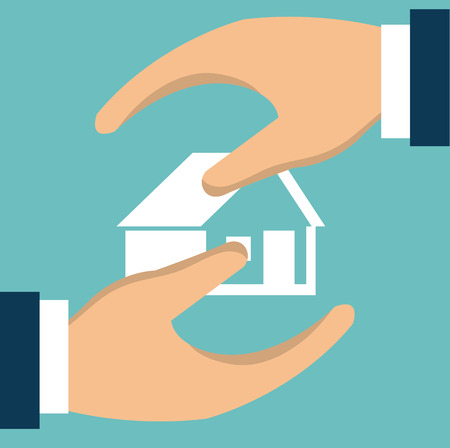Introduction to Smart Home System Architectures
Smart home technology has become an essential part of modern American living, offering convenience, efficiency, and even energy savings. As more homeowners in the U.S. adopt smart devices—from thermostats and lights to security cameras and voice assistants—understanding how these systems are organized becomes increasingly important. Two main types of smart home system architectures dominate the market: centralized and decentralized systems.
Each type has its own way of managing devices and handling communication within your home. Choosing between a centralized or decentralized system can impact not just your daily experience but also the scalability, reliability, and privacy of your setup.
What is a Centralized Smart Home System?
A centralized smart home system is controlled through a single hub or platform. This hub connects all smart devices—like lights, locks, thermostats, and cameras—and allows them to communicate with each other through one interface. Popular examples include platforms like Samsung SmartThings or Apple HomeKit.
Key Features of Centralized Systems:
- Single Point of Control: All devices are managed through one app or device.
- Easier Integration: Devices from different brands often work together smoothly via the hub.
- Simplified User Experience: Users can automate routines and control multiple devices with minimal effort.
What is a Decentralized Smart Home System?
A decentralized system doesn’t rely on a central hub. Instead, each device operates independently or communicates directly with others using common protocols like Wi-Fi, Zigbee, or Z-Wave. Voice assistants like Amazon Alexa or Google Assistant often act as bridges between devices but don’t serve as a true control center.
Key Features of Decentralized Systems:
- No Single Point of Failure: If one device fails, it doesn’t affect the whole system.
- Flexibility: Easier to add new devices without worrying about compatibility with a specific hub.
- User-Defined Setup: Users can customize their setup based on individual preferences and needs.
How These Architectures Fit into American Lifestyles
The choice between centralized and decentralized systems often comes down to lifestyle preferences and tech-savviness. For busy families seeking simplicity, centralized systems offer streamlined control that works well for routine schedules. On the other hand, tech enthusiasts or renters might prefer decentralized setups that allow for more flexibility and personal customization without needing to invest in a full ecosystem.
| Centralized System | Decentralized System | |
|---|---|---|
| Main Control | One central hub or platform | No hub; each device operates independently |
| User Experience | Simplified and unified interface | Diverse apps and settings per device |
| If the hub fails, system may stop working | No single point of failure; more resilient | |
| Tied to compatible devices only | Easier to mix-and-match brands/devices | |
| Homeowners seeking seamless automation | Renters or users wanting customization |
This foundational understanding of centralized and decentralized smart home systems helps set the stage for exploring their pros and cons in depth. Whether youre upgrading your existing setup or starting fresh, knowing how these systems function is key to making informed choices for your home and lifestyle.
Centralized Smart Home Systems: Benefits and Drawbacks
Centralized smart home systems are designed to manage all connected devices through a single hub or platform. This setup is like having a command center that controls lighting, security, HVAC, entertainment, and more — all from one app or interface. While this offers some clear advantages, it also comes with its own set of challenges.
Benefits of Centralized Systems
One of the biggest selling points of a centralized system is the convenience of unified control. Instead of juggling multiple apps or remotes for different devices, homeowners can manage everything from one place. This streamlined approach not only saves time but also makes it easier to automate routines and monitor the entire home efficiently.
Key Advantages:
| Benefit | Description |
|---|---|
| Unified Control | Manage all smart devices from a single app or hub. |
| Simplified Automation | Easier to create and manage routines across devices. |
| Improved User Experience | Less confusion with fewer apps and interfaces to learn. |
| Consistent Performance | Central systems often offer smoother integration and communication between devices. |
Drawbacks of Centralized Systems
Despite their convenience, centralized systems have potential downsides that homeowners should consider. The most significant risk is the “single point of failure.” If the central hub goes down or experiences a glitch, it could disrupt the entire smart home network.
Common Concerns:
| Drawback | Description |
|---|---|
| Single Point of Failure | If the main hub fails, many connected devices may stop working properly. |
| Limited Flexibility | Might be harder to mix and match products from different brands or ecosystems. |
| Higher Upfront Cost | Professional-grade centralized hubs can be expensive to install and maintain. |
| Vendor Lock-in | You may be tied to one brand or ecosystem, limiting future expansion options. |
When considering a centralized smart home system, its important to weigh these pros and cons based on your lifestyle, budget, and how tech-savvy you are. For many homeowners, the convenience is worth it — but understanding the limitations can help you avoid headaches down the road.

3. Decentralized Smart Home Systems: Strengths and Weaknesses
Decentralized smart home systems operate without a single control hub. Instead, each device can function independently or communicate directly with other devices. This setup offers several advantages in terms of security, scalability, and reliability—but it also brings its own set of challenges.
Benefits of a Decentralized Setup
Enhanced Security
One of the biggest perks of decentralized systems is improved security. Because theres no central point of failure, its harder for hackers to take down your entire smart home. If one device is compromised, the rest can still function normally.
Scalability
Adding new devices is typically easier in a decentralized system. You don’t need to worry about overloading a central hub—each device operates on its own or with limited dependencies, making it simpler to expand your setup as needed.
Reliability
If one part of the system fails, the rest keeps working. For example, if your smart thermostat goes offline, your lights and security cameras will still be operational. This makes decentralized systems more resilient overall.
Challenges to Consider
Integration Issues
A major downside of decentralized systems is that not all devices play well together. Since there’s no centralized command center, you might run into compatibility issues between products from different brands or platforms.
Management Complexity
Without a single app or dashboard to manage everything, controlling multiple devices can become overwhelming. You may end up juggling several apps just to adjust settings across your home.
Quick Comparison Table
| Feature | Decentralized System |
|---|---|
| Security | No single point of failure; more secure against full-system hacks |
| Scalability | Easier to add new devices individually without central limitations |
| Reliability | If one device fails, others continue to work normally |
| Integration | Difficulties with compatibility between different brands/devices |
| User Management | No unified control; may require multiple apps or interfaces |
If youre tech-savvy and value flexibility, a decentralized smart home system could be a great fit. However, youll want to ensure the devices you choose are compatible and manageable within your lifestyle needs.
4. Use Cases: Which System Fits Your Home and Lifestyle?
Choosing between a centralized or decentralized smart home system often comes down to your living situation and daily routines. Let’s break down how these systems perform in different real-world scenarios to help you figure out which one is right for you.
Urban Apartments
If you live in a city apartment, space is usually limited and Wi-Fi networks may be shared or congested. In this case, a centralized smart home system might offer better performance and simplicity. Since apartments typically don’t have as many devices or rooms to manage, a single hub controlling everything can be more efficient and user-friendly.
Why Centralized Works Well:
- Simplified setup: One hub controls all compatible devices.
- Less maintenance: Easier to troubleshoot and manage from a central app.
- Ideal for renters: Portable systems are easier to move when relocating.
Suburban Homes
Suburban homes tend to be larger and may include multiple floors, outdoor areas, garages, and even smart irrigation systems. A decentralized system offers more flexibility here because it allows different parts of the home to operate semi-independently while still being connected.
Why Decentralized is Better Here:
- Scalable: You can add new devices without overloading a single hub.
- Customizable zones: Manage lighting, HVAC, or security based on rooms or areas.
- Redundancy: If one device fails, others continue working independently.
Multi-User Households
In homes with several people—like families or roommates—each person may want control over their own space. A decentralized system gives everyone more autonomy while maintaining overall system harmony.
Benefits for Multiple Users:
- User-specific settings: Each room can respond to individual preferences.
- No bottlenecking: Multiple users can access different parts of the system simultaneously without lag.
- Easier delegation: Parents can control kids’ access while allowing freedom in shared spaces.
Comparison Table: Best Fit by Scenario
| Living Situation | Recommended System | Main Reasons |
|---|---|---|
| Urban Apartment | Centralized | Simplified setup, compact living space, ideal for renters |
| Suburban Home | Decentralized | Larger area coverage, scalability, zone customization |
| Multi-User Household | Decentralized | User-specific control, autonomy, less interference among users |
No matter where you live or who you live with, understanding how these systems align with your lifestyle helps ensure your smart home truly works for you—not the other way around.
5. Future Trends and Evolving Technologies
Smart home technology is evolving quickly, and some of the most exciting trends—like edge computing and AI-driven automation—are shaping how centralized and decentralized systems will work in the future. These innovations are helping homes become smarter, faster, and more secure, making a big impact on how we choose between centralized and decentralized setups.
Edge Computing: Processing Data Closer to Home
Edge computing means that devices process data locally, instead of sending everything to the cloud. This can reduce lag time (latency), improve privacy, and make smart homes respond faster to commands.
How Edge Computing Impacts Centralized and Decentralized Systems
| Feature | Centralized Systems | Decentralized Systems |
|---|---|---|
| Speed & Responsiveness | May experience delays due to cloud reliance | Faster reactions thanks to local processing |
| Privacy & Security | Data travels through central servers, increasing risk | Keeps data local, reducing exposure |
| System Reliability | If the hub goes down, system may fail | No single point of failure increases uptime |
This trend favors decentralized systems because it allows each device to operate independently without needing a central hub or constant internet access.
AI-Driven Automation: Smarter Homes That Learn Over Time
Artificial intelligence is helping smart homes get better at predicting your needs. AI can learn your routines—like when you wake up or leave the house—and adjust lighting, temperature, or security automatically.
The Role of AI in Different Smart Home Models
| Aspect | Centralized Model | Decentralized Model |
|---|---|---|
| User Experience | Smoother integration across all devices via one system | Might require more setup per device but offers flexible control |
| A.I. Efficiency | Easier for AI to analyze data from all devices in one place | A.I. must work on-device or sync data across multiple sources |
This makes centralized systems appealing for users who want a seamless experience with minimal management. However, improvements in on-device AI are closing the gap for decentralized models too.
The Rise of Interoperability Standards
The introduction of Matter—a new standard supported by Apple, Google, Amazon, and others—is helping devices from different brands work together more smoothly. This benefits both centralized and decentralized setups by making it easier to mix and match products without compatibility issues.
Main Benefits of Matter for Smart Homes:
- Simplifies device setup across ecosystems
- Makes smart home gear more future-proof
- Lowers barriers between centralized and decentralized configurations
This trend encourages flexibility in choosing the right mix of devices for your home without being locked into one brand or system type.
A Glimpse into the Future
The future of smart homes is moving toward hybrid models that combine the best features of centralized and decentralized systems. With technologies like edge computing, local AI, and universal standards like Matter, homeowners will have more choices than ever before—tailoring their smart homes to fit both their lifestyles and their privacy preferences.

